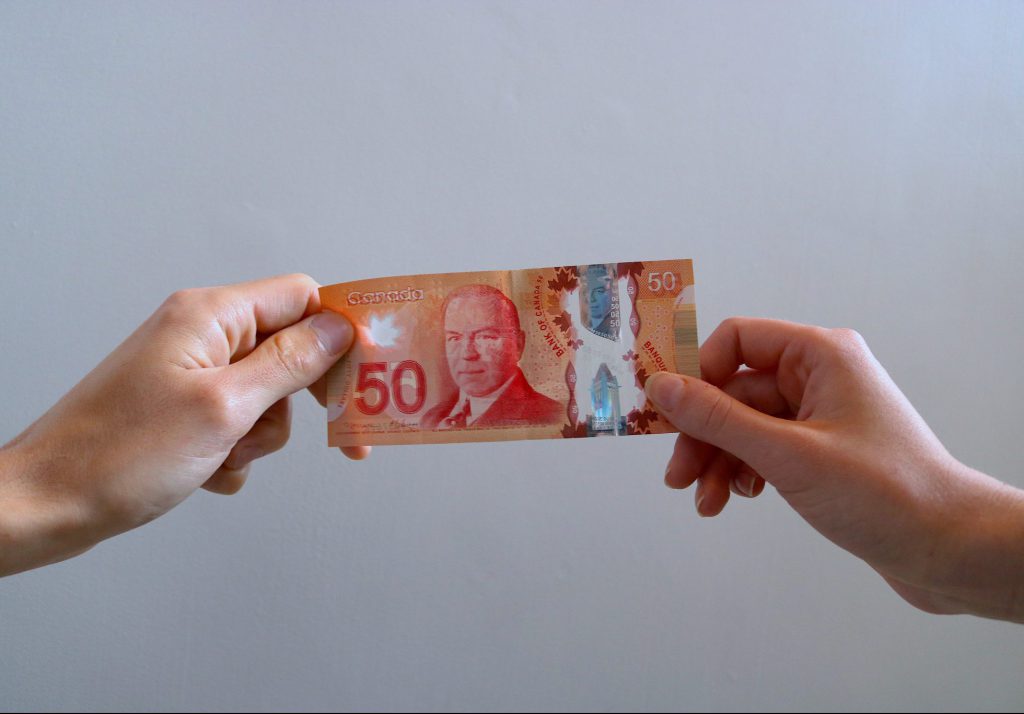Toilet paper, sanitizer and yeast were but a few of the top-of-mind goods hoarded by Canadians at the outset of the COVID-19 pandemic.
In more recent weeks, however, another shortage – this of $50 banknotes – has come to light.
A staff discussion paper released by the Bank of Canada at the beginning of this month notes the demand for all denominations “increased significantly” in March and April; however, the demand is highest for $50 and $20 notes. Overall, in those two months, financial institutions’ net note withdrawals – the frequency, percentage and total amounts – were among the largest since 1998. While the two-month increase (tracked by the bank using a “notes in circulation” measure) was countrywide but concentrated in Canada’s major economic and population hubs, including Toronto, Montréal, Calgary and Vancouver.
While the increased demand isn’t expected to hinder the general public’s ability to withdraw cash, it could lead banks to change their cash orders to include denominations other than $50 and $20 notes.
“We still have $50 banknotes in stock, but the order adjustments were made in order to maintain adequate inventories throughout the next few weeks,” said Amélie Ferron-Craig, media relations consultant for the central bank.
“This adjustment is due to the larger-than-expected demand over the past few months and ahead of our regularly scheduled stock replenishment expected by the end of summer. This measure, which only affects the $50 denomination, is temporary and will be lifted as soon as possible.”

In March and April, the highest demand was for $50 and $20 notes. (Photo by ‘KMR Photography’ via CC by 2.0)
CONCERNS OF A COMPROMISED SUPPLY
In early March, bank officials “became concerned that the banknote supply channel could become compromised during the pandemic,” according to the staff discussion paper.
The central bank increased its note reserves across the Bank Note Distribution System (BNDS), which through its 10 regional centres provides cash to financial institutions across the country, “to ensure that any increase in demand for cash by financial institutions across Canada could be met.”
After using its reserves to fill the BNDS inventory from 60 per cent to 90 per cent in early March, those numbers dwindled to 70 per cent by late April.
The paper also points to three main reasons for the shortage. They include:
- a precautionary measure taken by financial institutions to increase their cash inventories during the pandemic due to concerns about possible disruptions to cash transportation services and to reduce the risk of cash stockouts from potential customer demand;
- an increase in the amount of cash drawn from the Bank of Canada by financial institutions, whose flow of cash deposits from retailers was disrupted; and
- higher consumer demand for banknotes—something the bank’s analysis cites as “significant.”
The central bank’s 2020 “Cash Alternative Survey” also highlights an increase in the amount of cash held by Canadians – an average of $22 more – during the pandemic. Meanwhile, 35 per cent of Canadians have decreased their overall cash use and another 30 per cent of respondents said they did not use any cash. Just seven per cent of respondents reported difficulties withdrawing cash during the pandemic.
During the height of the lockdown, some Canadian businesses, including Metro, Loblaws and Tim Hortons, began encouraging customers to use contactless payments while others – Longos, Best Buy, Indigo and The Shoe Company – have refused cash entirely.
To read the full Bank of Canada paper, click here.
The bank is also planning to conduct follow-up surveys and analyses later in 2020 and in the first half of 2021.

Banknote shortages are also reported in Europe, South America, Australia and the United States, the latter of which is also experiencing a coin shortage.
EUROPE & THE U.S.
A similar report published by the U.K.-based Centre for Economic Policy Research notes a similar increase in circulating cash in Italy, Spain, Germany, France, Australia, Brazil, Russia and the United States, the latter of which is also battling a nationwide coin shortage.
The U.S. Federal Reserve issued a statement this June noting the pandemic has caused a shortage of pennies, nickels, dimes and quarters at financial institutions across the country.
“The COVID-19 pandemic has significantly disrupted the supply chain and normal circulation patterns for U.S. coin,” according to the June statement. “In the past few months, coin deposits from depository institutions to the Federal Reserve have declined significantly and the U.S. Mint’s production of coin also decreased due to measures put in place to protect its employees. Federal Reserve coin orders from depository institutions have begun to increase as regions reopen, resulting in the Federal Reserve’s coin inventory being reduced to below normal levels.”
After some temporary rationing and strategic allocation effective June 15, the Federal Reserve also launched the U.S. Coin Task Force to “identify, implement, and promote actions to reduce the consequence and duration of COVID-19 related disruptions to normal coin circulation,” according to a June 30 statement.
Following its first meeting on July 10 and several more throughout this month, the task force is slated to release recommendations in early August.

